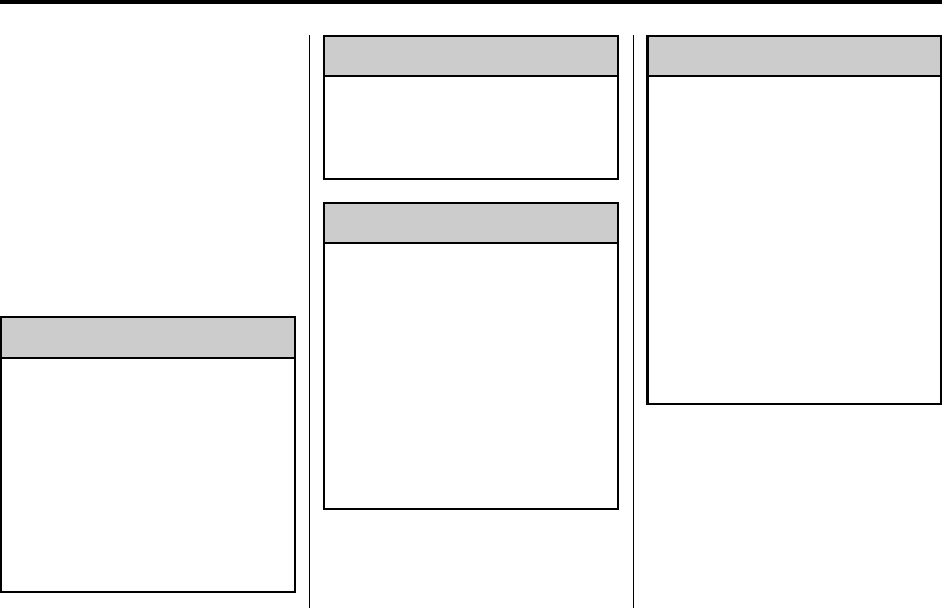
8-16 Driving and Operating
The GVWR includes the weight
of the vehicle, all occupants,
fuel, and cargo. Never exceed
the GVWR for the vehicle, or the
Gross Axle Weight Rating
(GAWR) for either the front or
rear axle.
If the vehicle is carrying a heavy
load, it should be spread out.
See “Steps for Determining
Correct Load Limit” earlier in this
section.
{
WARNING
Do not load the vehicle any
heavier than the Gross
Vehicle Weight Rating
(GVWR), or either the
maximum front or rear Gross
Axle Weight Rating (GAWR).
If you do, parts on the vehicle
can break, and it can change
the way the vehicle handles.
(Continued)
WARNING (Continued)
These could cause you to lose
control and crash. Also,
overloading can shorten the
life of the vehicle.
{
WARNING
Things you put inside the
vehicle can strike and injure
people in a sudden stop or
turn, or in a crash.
.
Put things in the cargo
area of the vehicle. In the
cargo area, put them as
far forward as you can.
Try to spread the weight
evenly.
(Continued)
WARNING (Continued)
.
Never stack heavier
things, like suitcases,
inside the vehicle so that
some of them are above
the tops of the seats.
.
Do not leave an
unsecured child restraint
in the vehicle.
.
When you carry something
inside the vehicle, secure
it whenever you can.
.
Do not leave a seat folded
down unless you need to.


















